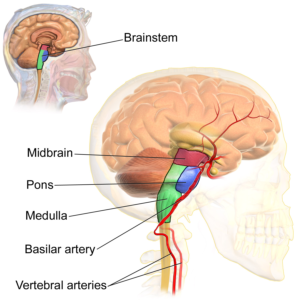Chronic headaches can be cause for alarm. We work with children and adults with chronic headaches and Migraines and have had excellent results in their outcomes. We’ve found often times that mothers and daughters tend to exhibit common symptoms in regards to these headaches, so it is a good idea for the family to be evaluated if there’s multiple headaches occurring among family members.
Kelly, who’s daughter has headaches said this when she brought her daughter in for evaluation, “My 10 year old daughter gets them pretty much every day, and this has been going on for six months. She missed a lot of school, and now is starting to get them again in the summer. The doctor ordered a CT scan which didn’t show anything. What can this be? Could it be sinuses? I’ve had sinus issues and headaches forever, but I just take “X” medication and it takes the pain levels down about 50%, I’ve learned to live with them.”
Headaches are common in children and in adults. They’re usually “primary” headaches — meaning they’re not caused by anything specific, and they’re not associated with any specific medical condition. They’re just headaches.
Kinds of “primary” headaches in children include:
 Migraine. Maybe the most common of the more-severe headaches. In children they’re often bilateral and fairly brief. Sometimes they’re accompanied by vomiting, or are worsened by lights or sound; often the best homemade “cure” is to rest with lights out and covers over the windows. Migraines often run in families. We find this to be the case with adults as well, often times having food and stress as the major trigger. During the exam process, we often find abnormalities in areas of the brain called the Midbrain (depicted in red in the picture here), as well as poor heartrate variability testing scores, and poor eye tracking issues.
Migraine. Maybe the most common of the more-severe headaches. In children they’re often bilateral and fairly brief. Sometimes they’re accompanied by vomiting, or are worsened by lights or sound; often the best homemade “cure” is to rest with lights out and covers over the windows. Migraines often run in families. We find this to be the case with adults as well, often times having food and stress as the major trigger. During the exam process, we often find abnormalities in areas of the brain called the Midbrain (depicted in red in the picture here), as well as poor heartrate variability testing scores, and poor eye tracking issues.
Check out our YouTube Video on the Neurology of Headaches and Migraines!
Tension. These create a band-like, or squeezy feeling in the head, and aren’t usually severe. In a typical chiropractic office, these are the most common, and often are associated with abnormal neck movement. It’s important to note the eyes work very closely with the neck muscles and must coordinate movement with your neck, so when you have chronic neck issues, there’s usually an eye tracking issue that we can correct in the office with simple exercises most of the time.
Chronic daily headache. This sounds like Kelly’s daughter. They often occur on top of occasional more-severe headaches, like migraines.
The general principles of chronic daily headache:
- Avoid daily Advil or Tylenol. If you use those more than 3 days a week, you will perpetuate the headaches. I know this sounds odd, but I promise it is true. Consider Omega-3 Fatty Acids dosing 3,000mg-5,000mg daily for anti-inflammatory effects
- Try to maximize healthy lifestyle. Good regular sleep, diet, avoiding a lot of preservatives and chemicals, getting regular exercise. Again, I know this sounds odd, but it does help. Avoid gluten and dairy if necessary.
- Try not to miss school. That inevitably makes headaches worse.
- Consider Chiropractic/massage/yoga/relaxation therapy.
- If there is an overlay of depression/anxiety/mood issues, deal with that. There is often a psychological component, either contributing to the headaches, or being caused by the headaches and missing school and activities. Food triggers often cause depression and mood issues.
Yet another headache myth to dispel: vision problems DO cause recurrent headaches in kids. Some people who are nearsighted will squint, and by the end of the day will develop tension-like pain from tightening up the muscles of their face and scalp.
Headaches in children are common, and most commonly are caused by a minor infection, dehydration, hunger, or stress. If they’re recurrent, they’re likely to be due to food sensitivities, GI issues, or slight dysfunction in the balance of brain function. One of the common primary headaches, like tension headaches or migraine or chronic daily headache. Headaches that are progressive (worsening), or associated with other prominent or worsening symptoms, need an urgent medical evaluation, but those are fortunately rare. More typically, headaches just need to be treated like, well, headaches.

